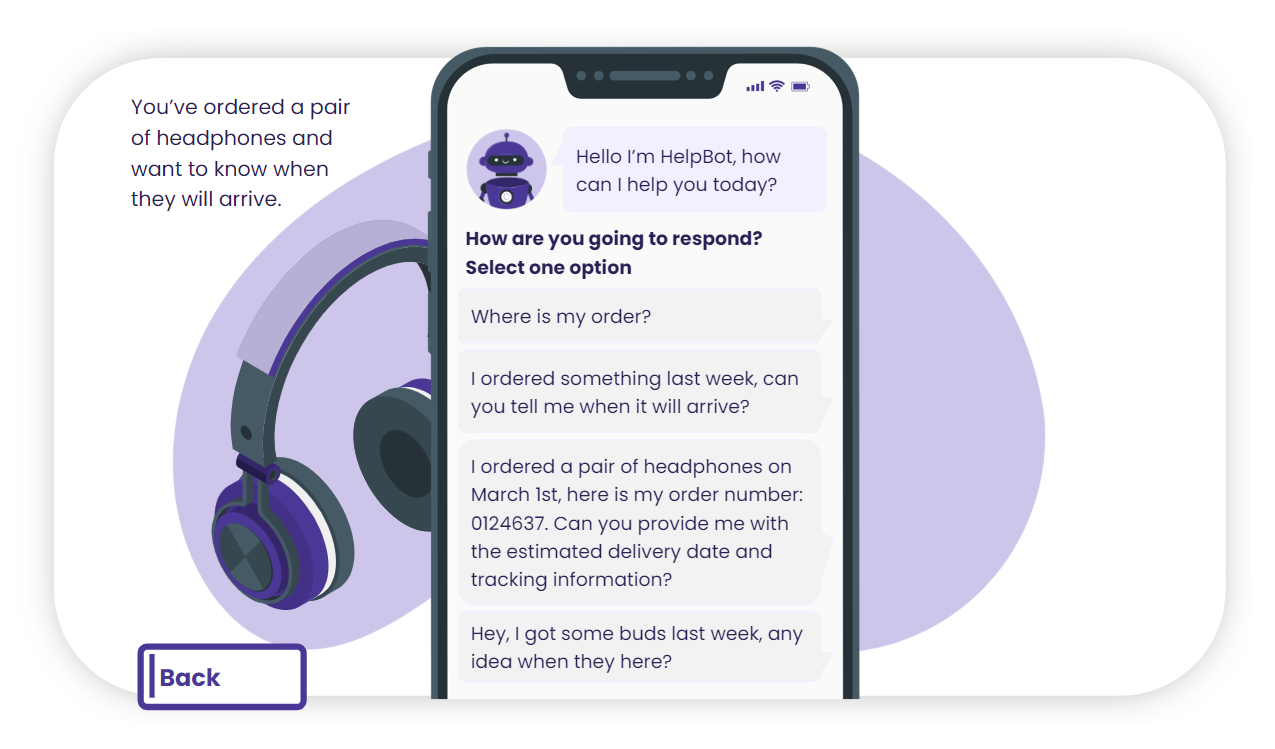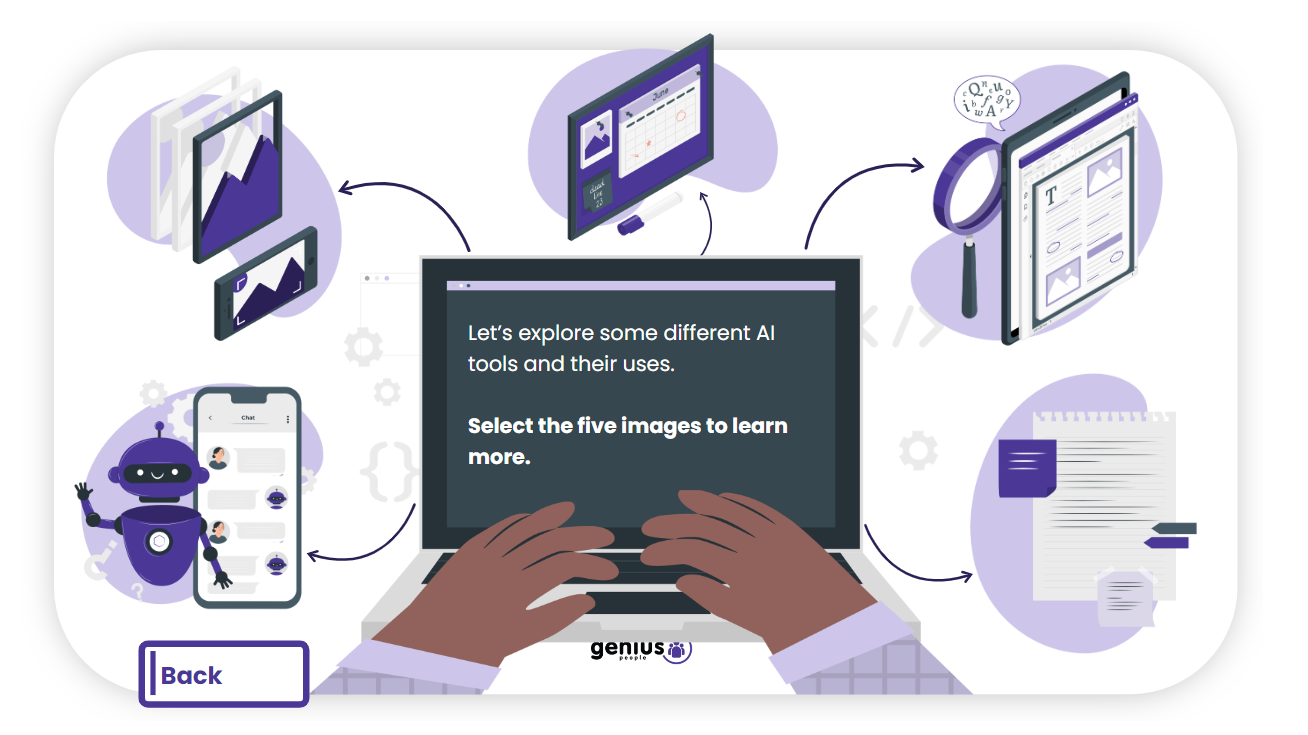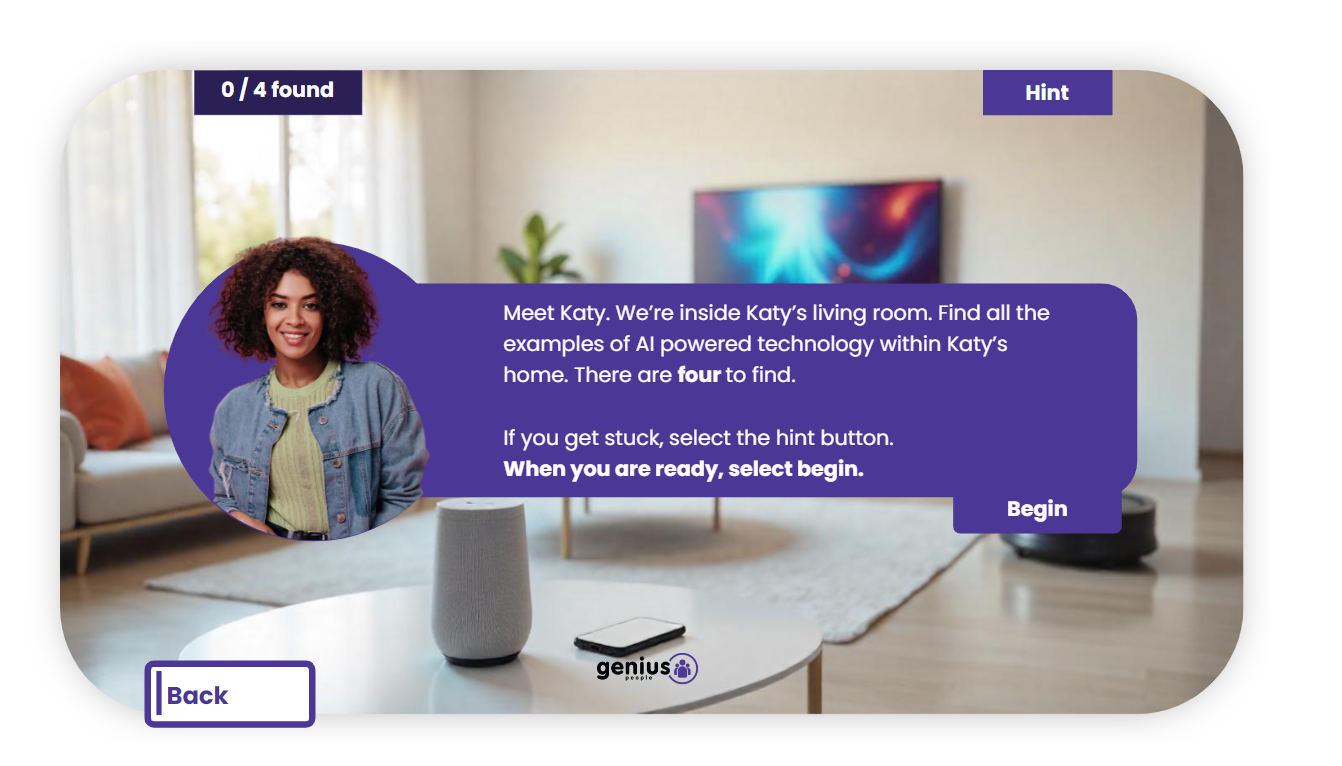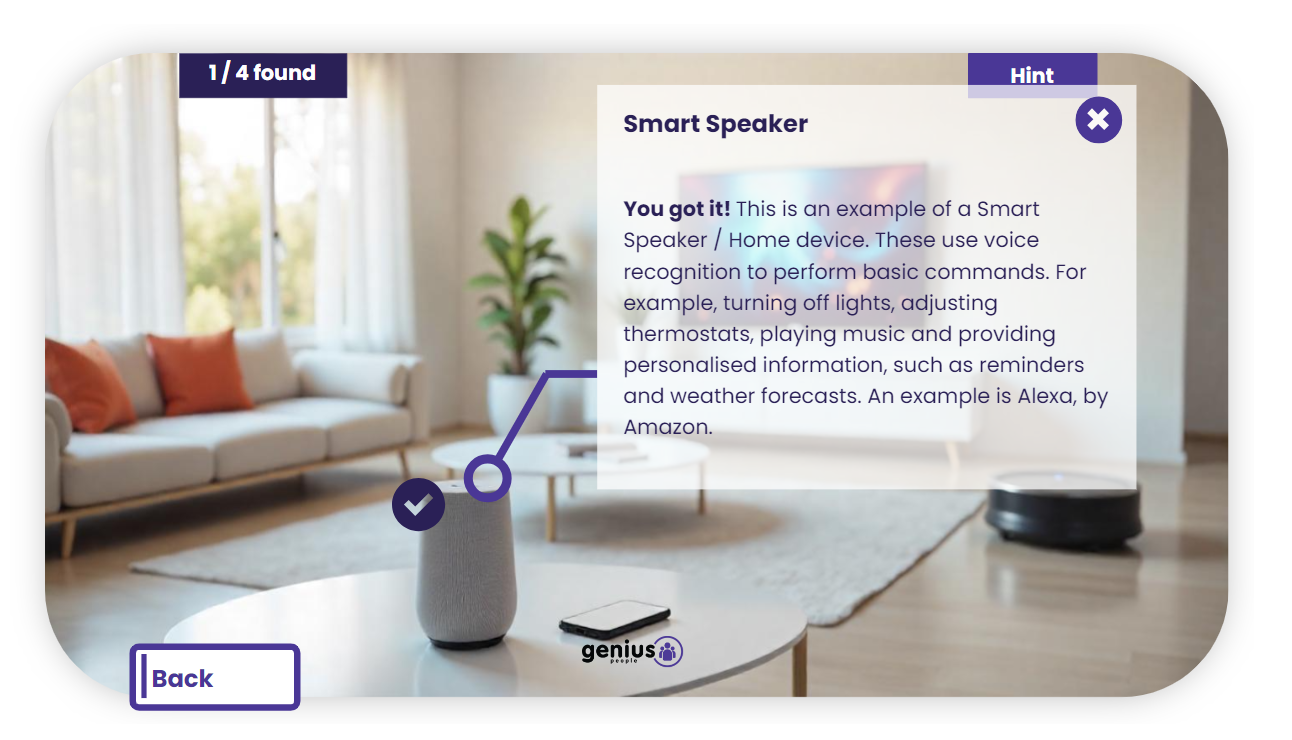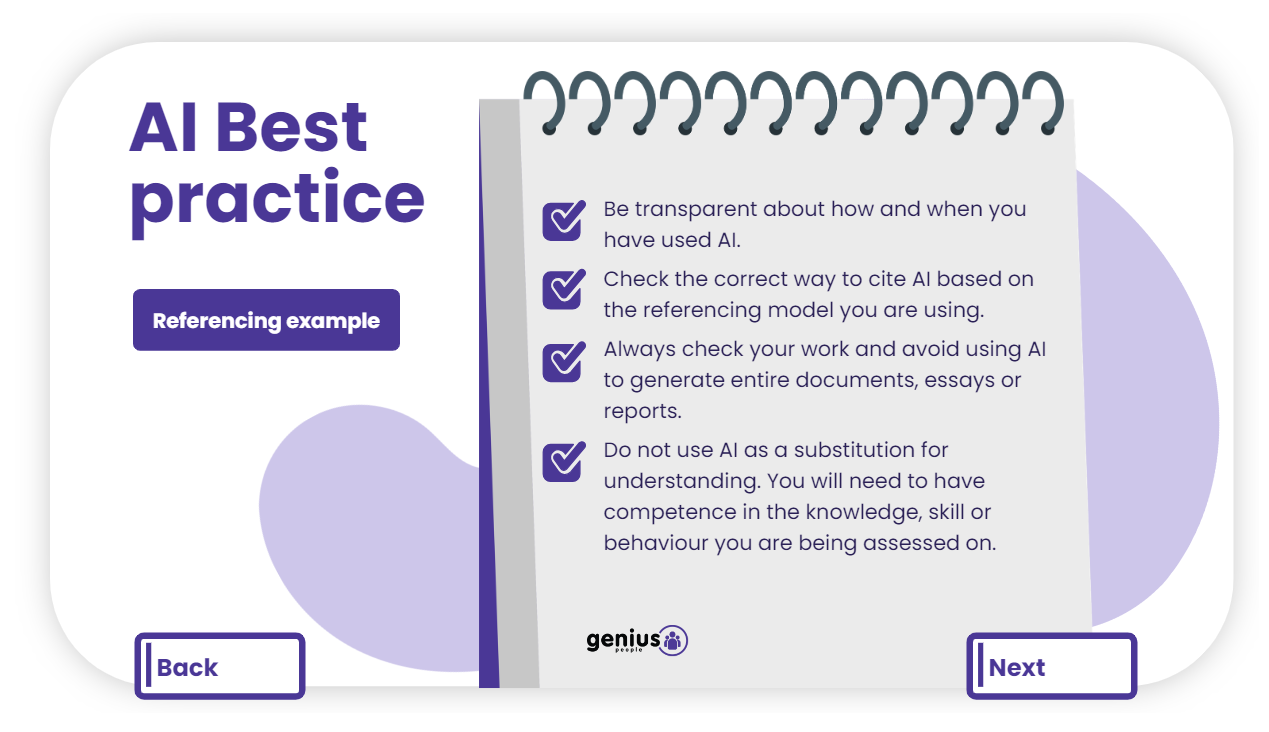
Integrating AI eLearning
As part of my ongoing relationship with Genius People and my involvement in developing their eLearning suite, I was tasked with creating an eLearning surrounding the use of AI in apprenticeships.
Being a hot topic at the moment, with new and upcoming guidance, there was little existing content in place for this module. Therefore I had to work closely with the client to define what exactly it was they wanted to cover in order to not overwhelm the learner, but also provide guidance and support for apprentices in using AI.
As a result, there was no Subject Matter Expert (SME) for this project, I therefore took on the role of not only writing and structuring the content, but gathering the majority of it too.
PROJECT DETAILS
Role: Instructional designer and ELearning Developer.
Brief: creation of an eLearning course centred around AI and its use in apprenticeships.
TOOLS
Articulate Storyline.
Adobe Photoshop.
SKILLS
ELearning development.
Instructional design.
Graphic design.
Video editing.

My response to the brief
-
To begin the development of this module I arranged a meeting with the client to discuss key factors such as:
What key messaging they wanted to pull through within this module;
Whether this was a deep dive into AI, or a light touch;
What does the learner / apprentice need to do or know upon completing this module.
From this discussion I was able to ascertain that my client wanted the learner to have an awareness of AI and how to use it responsibly, but also how to leverage it to benefit them both in their apprenticeship and their job. As AI policy can vary per End-Point Assessment provider, it was decided that we wouldn’t go into a deep dive as to the ‘rules’ surrounding AI in apprenticeship submissions. Instead, signpost the learner to take responsibility in researching this based on their own EPA provider, whilst also making them aware of the risks involved in using AI.
The topic of AI can feel very overwhelming, therefore it was important to me that this eLearning feel very tangible, relevant and jargon free. As it can be such a nuanced topic, as how AI may benefit someone can be different between individuals, there was a big focus on reflection throughout this eLearning. Basic information was provided, such as an overview of the different uses of AI, but ‘stretch’, reflective style activities were then added to encourage the learner to reflect on how this information can be relevant to them.
An example being a downloadable PDF which instructs the learner to go and practice prompt writing.
-
As I had designed all prior eLearnings for Genius, there was already a look and feel / design style in place for this eLearning. I followed the same structure, illustration and colour scheme as previous eLearnings. Imagery was tricky for this subject matter, therefore I leaned on illustrations to help convey the necessary messaging. Although fairly conceptual as a topic, it was important that there was still a good range of interactivity within the module, therefore I used scenario-based exercises where applicable and tried to bring subject matter to life through visual design. For example, via an ’interactive chatbot’ activity, where the learner receives a different response based on the answer they input.
I also made use of the new morph transition in Storyline to create more dynamic select to reveal activities. This allowed me to break up text and display it in a more fluid way. I created a ‘spot the AI’ style activity in which the learner had to look at the image of a living room and select all examples of AI powered technology. This was an interactive way of getting the learner to begin thinking about how AI is already integrated into their everyday lives and was much more engaging than displaying this as text on a screen.
I made sure to make the exercise accessible too, providing a hint button and making the slide keyboard accessible, with alt-text where applicable.
-
The main challenge when writing this module was to not add too much information and knowing when a deeper dive is needed. For example, a section entitled ‘everyday AI’ was added to introduce the eLearning. This was a light touch that defined what AI is, provided some examples of well-known AI such as Amazon Alexa or customer service chatbots and defined why having an awareness of AI is important. This section was only 5-minutes and had a downloadable activity at the end, should the learner want to research the different types of AI in more depth.
In contrast, a section entitled ‘AI and me’ challenges the learner to define how they can use AI to benefit them and explores how as an individual they can get the most out of AI. This section was around 10-minutes and was all about building the concept of AI adding value.
Writing a module with no prior content in place was tricky, but regular communication with the client, along with creating a detailed scoping document helped me to break down the eLearning into chunks and really get a feel for what was important to cover in the 30-minutes.
Another challenge with this subject matter is the longevity of it. AI is developing at a rapid pace, so there was a danger this module could become outdated quickly. This is why we focused less on the technology side of AI and more on the importance of the learner defining how they can integrate it into their everyday lives and apprenticeship studies in a way that adds value. The only ‘live’ document we added was the Genius AI policy, which could be easily re-uploaded should there be any changes to this in the future.
